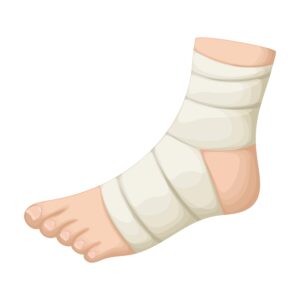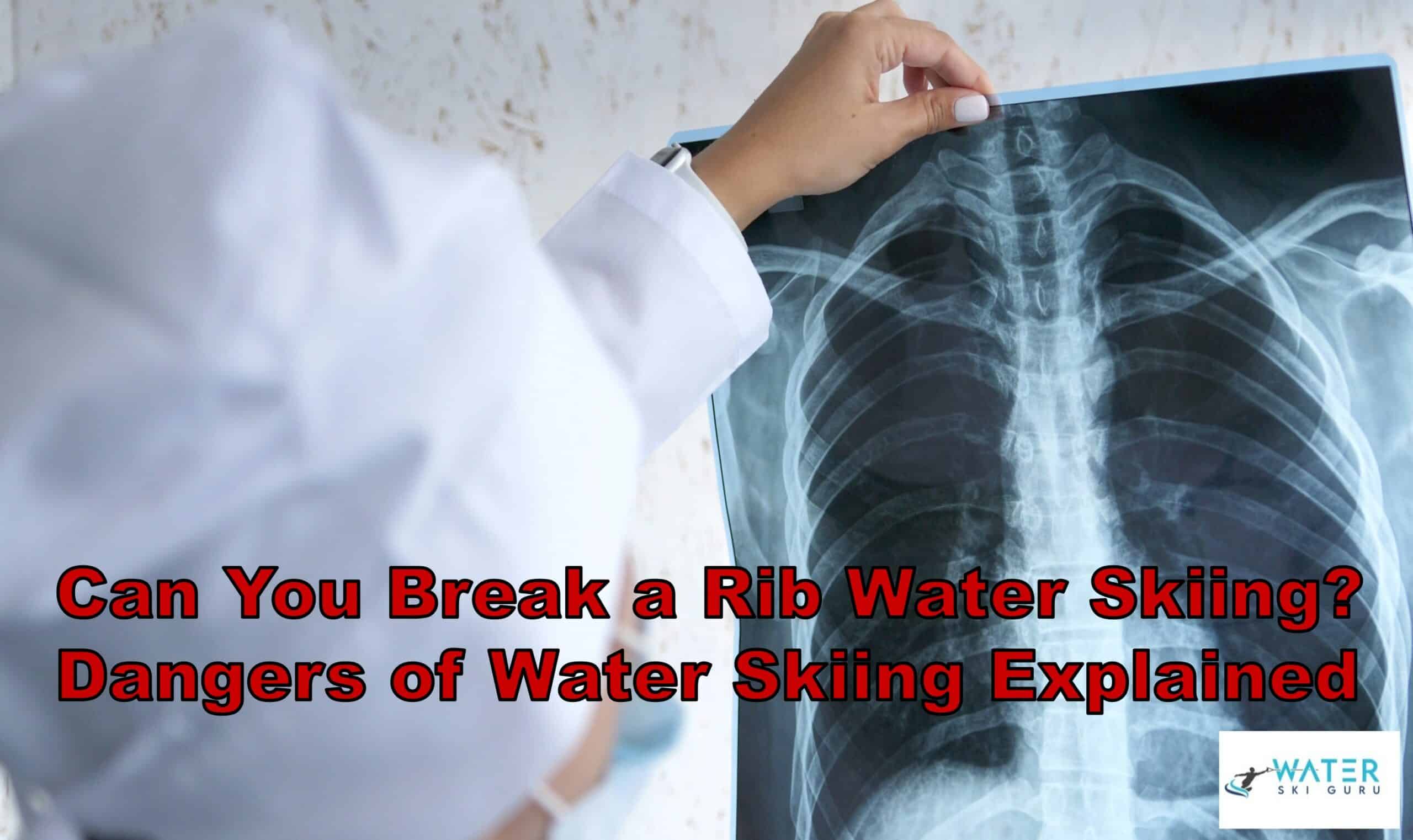One of the most popular sports in the summer is water skiing. It can be done in the ocean or on big lakes, and it’s a great sport to do alone or with a group of people. In the summer heat, nothing is better than splashing in the water, and if you can turn it into a competitive or friendly activity, then why not?
You need to keep in mind, though, that even though water skiing is all fun, it is still a sport. And in sports, there are injuries that you need to keep an eye out for. One of the most unexpected injuries you can suffer while water skiing is broken ribs.
So, can you break a rib while water skiing? You can break a rib while water skiing. Broken ribs usually happen due to hard impacts on your ribs, and most people do not think they can get them while in the water. The truth is the water surface can sometimes be as hard as concrete if you hit it on certain angles with enough force.
Keep reading to learn more about how to deal with a broken rib, other injuries you can get while water skiing, and some important tips to make your water skiing experience a lot safer.
Can You Break a Rib Water Skiing?
Your ribs are a band of bones that protect your heart and lungs. They are sturdy and linked together with muscles, but with a hard hit on the chest, your ribs can be broken.
Normally, people think that they need to be hit with something solid or fall really hard on concrete for their ribs to break. But certain falls in the water can also cause broken or bruised ribs. When hit at a specific angle with enough force, the water surface can be as hard and painful as concrete and can cause serious injuries.
The Signs of a Broken Rib
Broken ribs are pretty painful, and some people mistake the pain for heart pains or a possible heart attack. But rib pain is quite different from heart attacks and way less serious. That being said, you should not ignore a broken rib, and the first step toward healing is recognizing your symptoms.
- It hurts when you touch it – Unlike a possible heart attack, your pain will get worse when you poke around your chest. Because broken ribs are basically like broken bones, the more you touch them, the worse they will hurt.
- It can bruise the skin – You might notice some bruising around your chest area. This is because the hard hit on the water surface will leave marks around your broken ribs. Bruises are not always a sign of broken ribs, though. They also might just be bruised but not broken.
- It is painful to breathe – Broken ribs can make it hard and painful to take a breath. As you breathe through your lungs, which are located inside your broken ribs, each breath you take will cause your ribs to move, which will be painful.
- It is painful to cough or laugh – Coughing or laughing also involves using your lungs, which will cause your ribs to move and increase your pain.
How Long Do Broken Ribs Take to Heal?
Once you suspect your ribs are broken, you need to go to the doctor immediately. An x-ray or a CT scan of your chest will be done to assess the damage and ensure there is no further damage to your organs.
Once you’re diagnosed with a broken rib, there will be nothing to do but wait for it to heal on its own. Unfortunately, a broken rib can take 3 to 6 weeks to heal completely.
It’s highly advisable NOT to wrap your chest with bandages if you have a broken rib to let your lungs expand normally. You can, however, take painkillers for your pain and use ice packs to help with the possible swelling.
Make sure you rest your body completely and don’t make any sudden or unnecessary movements during the healing period.
What Injuries Can You Get While Water Skiing?
Broken ribs are not the only kind of injuries you can get while water skiing. Any physical sport can occasionally cause bodily injuries that, as a good sportsperson, you should be aware of.
So, here are some examples of injuries you can get while water skiing:
1 – Shoulder injuries
Dislocating your shoulder due to falling off your board is a common skiing injury.
When you are about to fall off your board, your body automatically tries to protect its vital organs but extending your arms out and trying to stop the fall. Then, you put all your body weight on your shoulders, which can get partially or fully dislocated.
Most dislocated shoulder injuries can be reset on the spot. But during the time you wait for a professional to reset your shoulder, make sure you keep it immobile and use an ice pack to reduce the swelling.
2 – Ankle and foot injuries
Your ankle and foot are holding pretty much all your weight while skiing. They are strapped to your board, and your skid, which adds a lot of pressure on them and can cause ankle sprains or strains.
This kind of injury will cause pain or tenderness around your ankle/foot area, making it hard to walk or put weight on it.
A sprained or strained ankle needs a lot of rest to heal. As long as your ankle is not broken, all you need to do is use ice to reduce the possible swelling, wrap your ankle in bandages to support it and keep it elevated on a pillow.
Safety Tips for Water Skiing
Water skiing is a fun sport, but it can also be dangerous if you’re not prepared and well-informed about the rules and regulations of skiing.
Taking the time to learn all the safety measures before and during skiing might be burdensome, but it can also save you from many injuries and accidents.
So, here are some important safety tips for you to observe while water skiing:
- Make sure the water is deep enough – Skiing in shallow water is very dangerous because if you fall, you can hit the bottom pretty hard, causing broken bones and head injuries.
- Learn basic hand signs with the boat operator – There are certain hand signs that are used between the skier and the boat operator for communication while skiing. Learn them ahead of time, and make sure to practice with the driver.
- Wear an appropriate life jacket – It doesn’t matter if you can swim; you still need to wear a life jacket. A U.S. Coast Guard-approved life jacket can help decrease impact and save you from many injuries.
- Have an observer on the boat – An observer’s only job is to keep an eye on the skier and let the boat operator know if they fall off or need help and can’t use hand signs.
In addition to these tips, always make sure to inspect your equipment before you hit the water and do basic stretch exercises beforehand to get ready. No matter how much of a professional or a beginner you are, complying with safety tips can be the line between life and death.
Related Questions
Can You Break Bones Water Skiing?
You can break your bones while water skiing if the impact of your fall is strong enough. Your ankle, feet, and shoulders are the bones most likely to get broken as a result of a hard fall while water skiing. Broken bones are an extreme injury, though. Most of the time, it will just be a sprain or a dislocation.
Can You Break Your Neck While Water Skiing?
You can break your neck while water skiing, but it’s more common to get a sprain or soreness due to pressure on the head and neck. A strain of the neck muscles is called whiplash, and if minor, then all you need is rest to get back to its healthy state.
What Should a Skier Do if They Fall in the Water?
After falling in the water, you should hold your ski up for the boat observer to be able to locate you. Stay in place until the boat comes around and you are helped out of the water. In case of a fall, the observer’s job is to notify the operator and make sure you come up safely.

